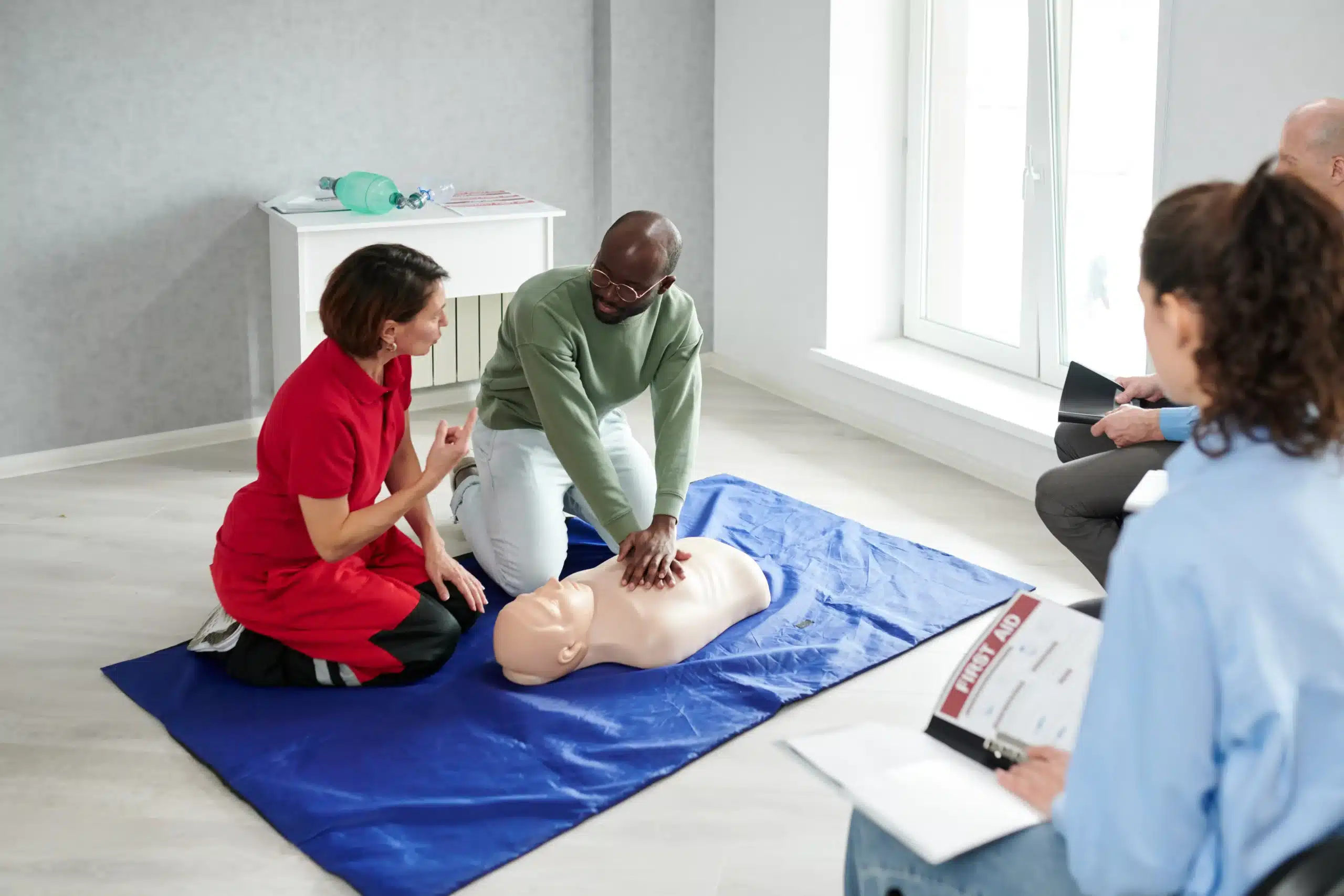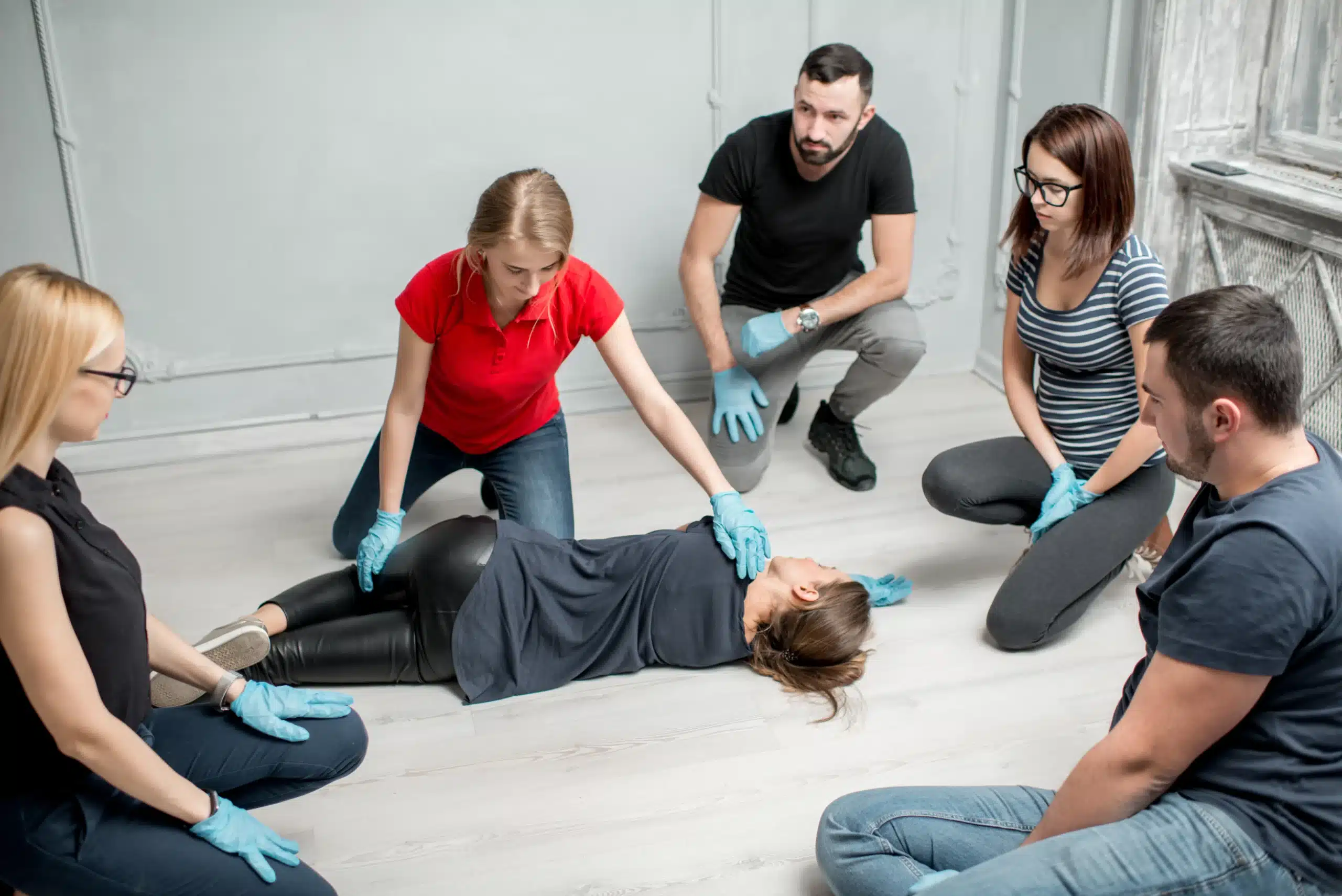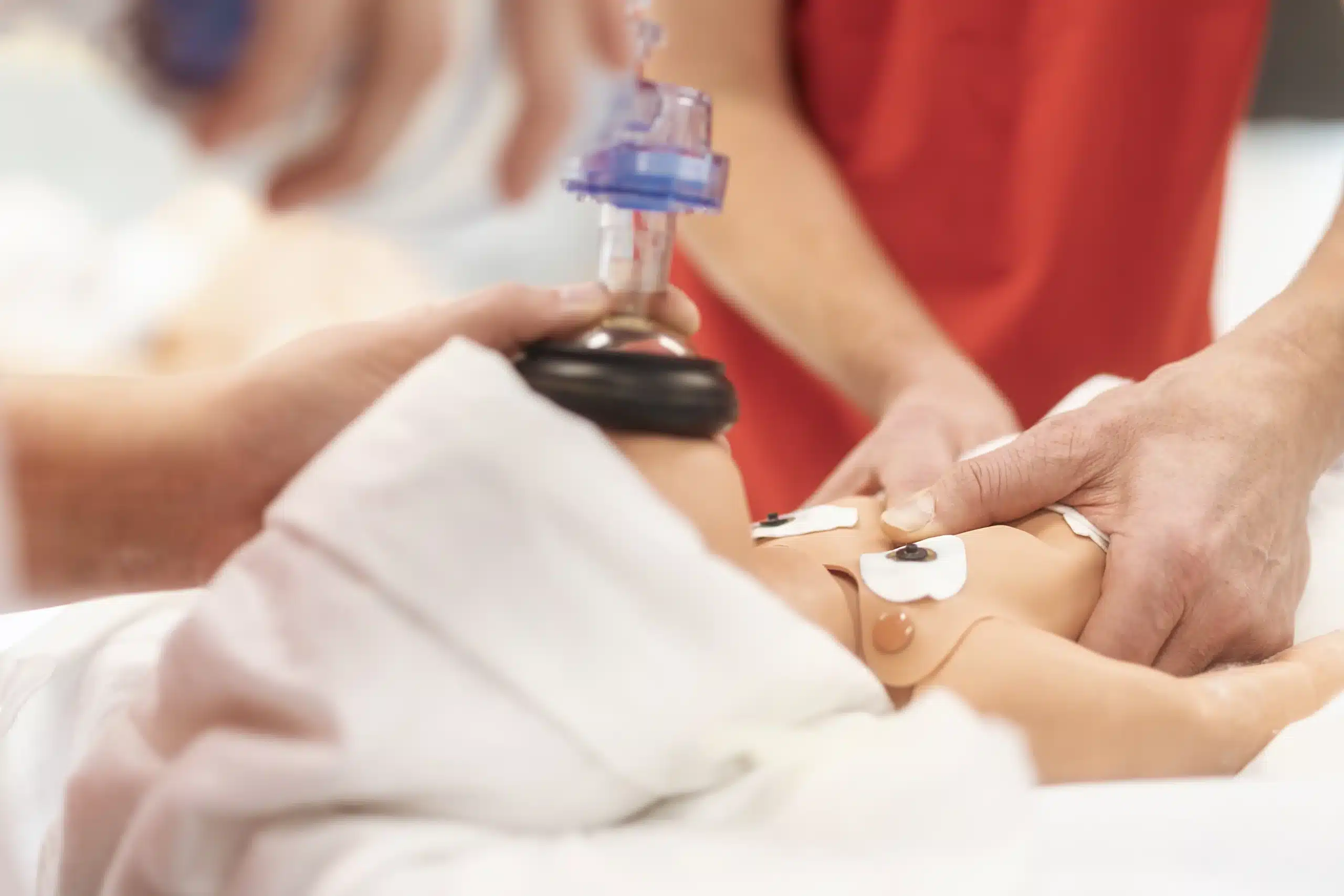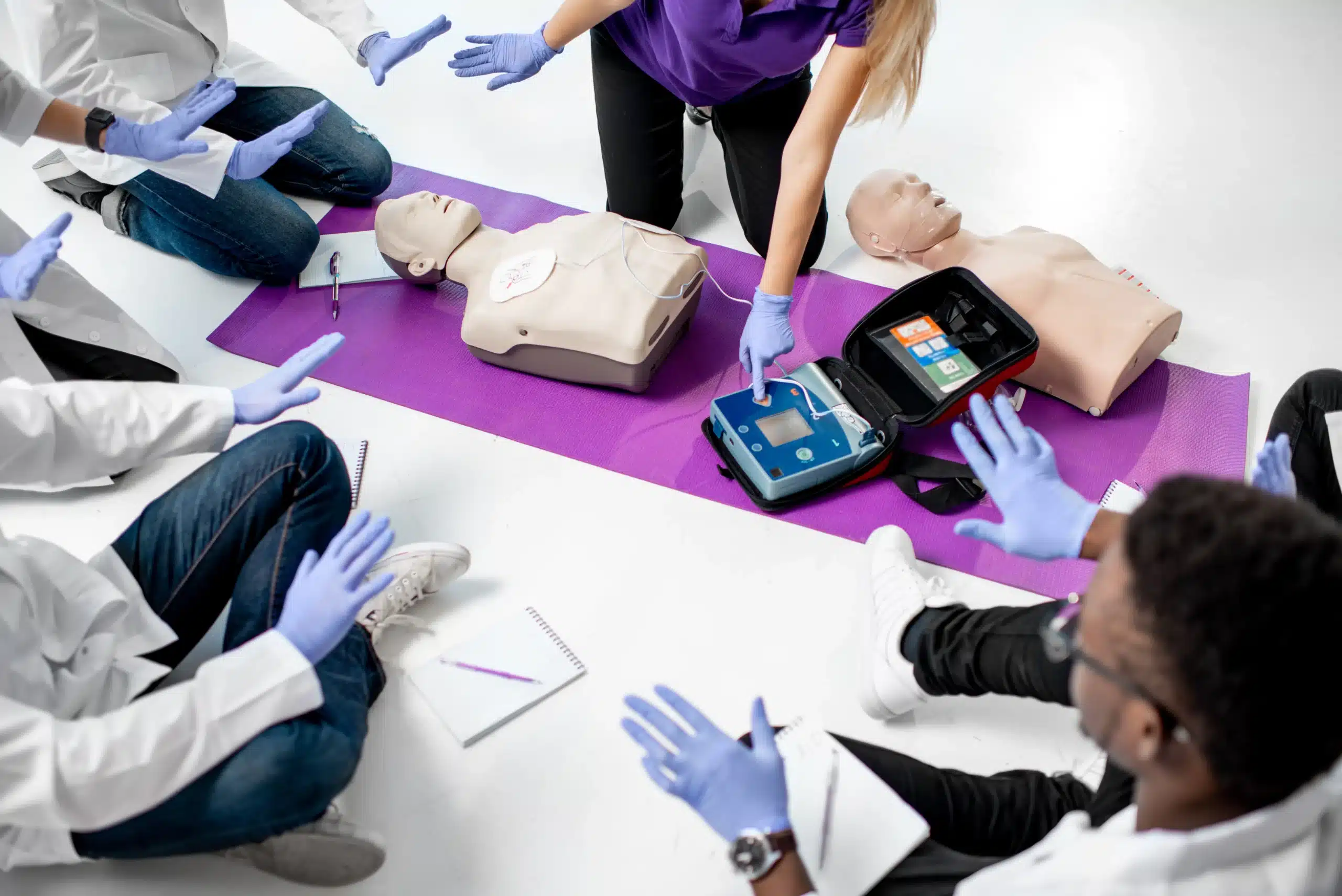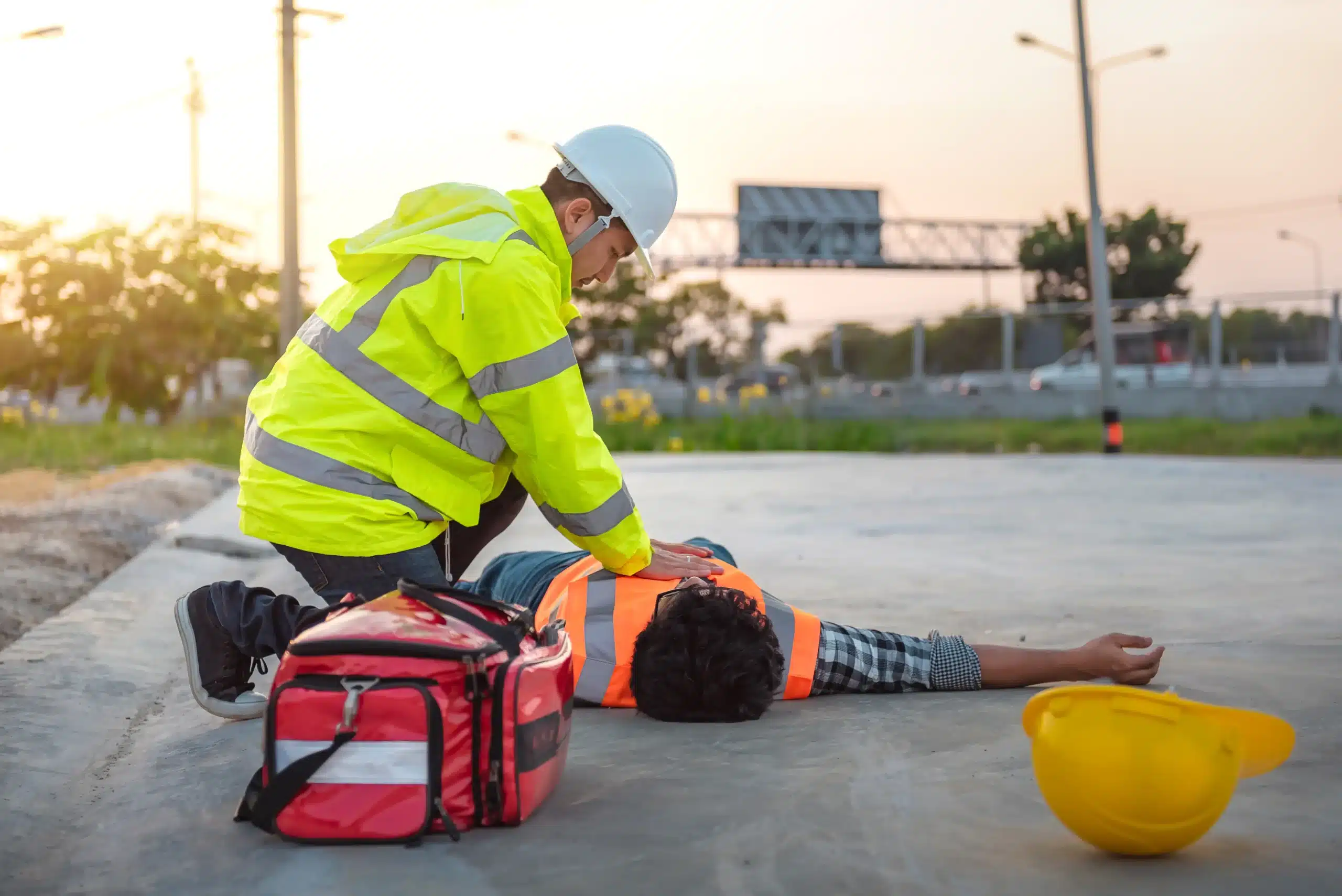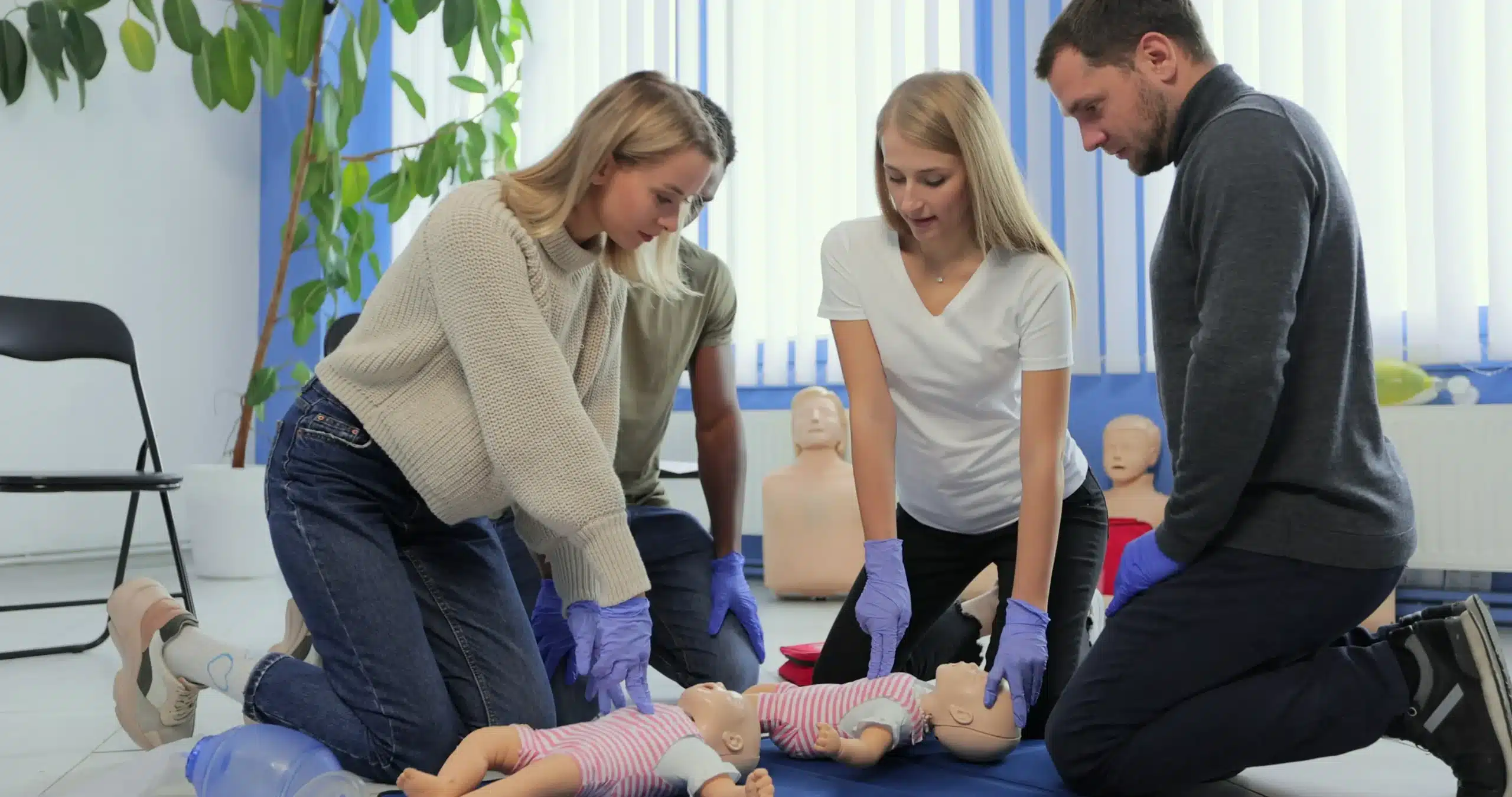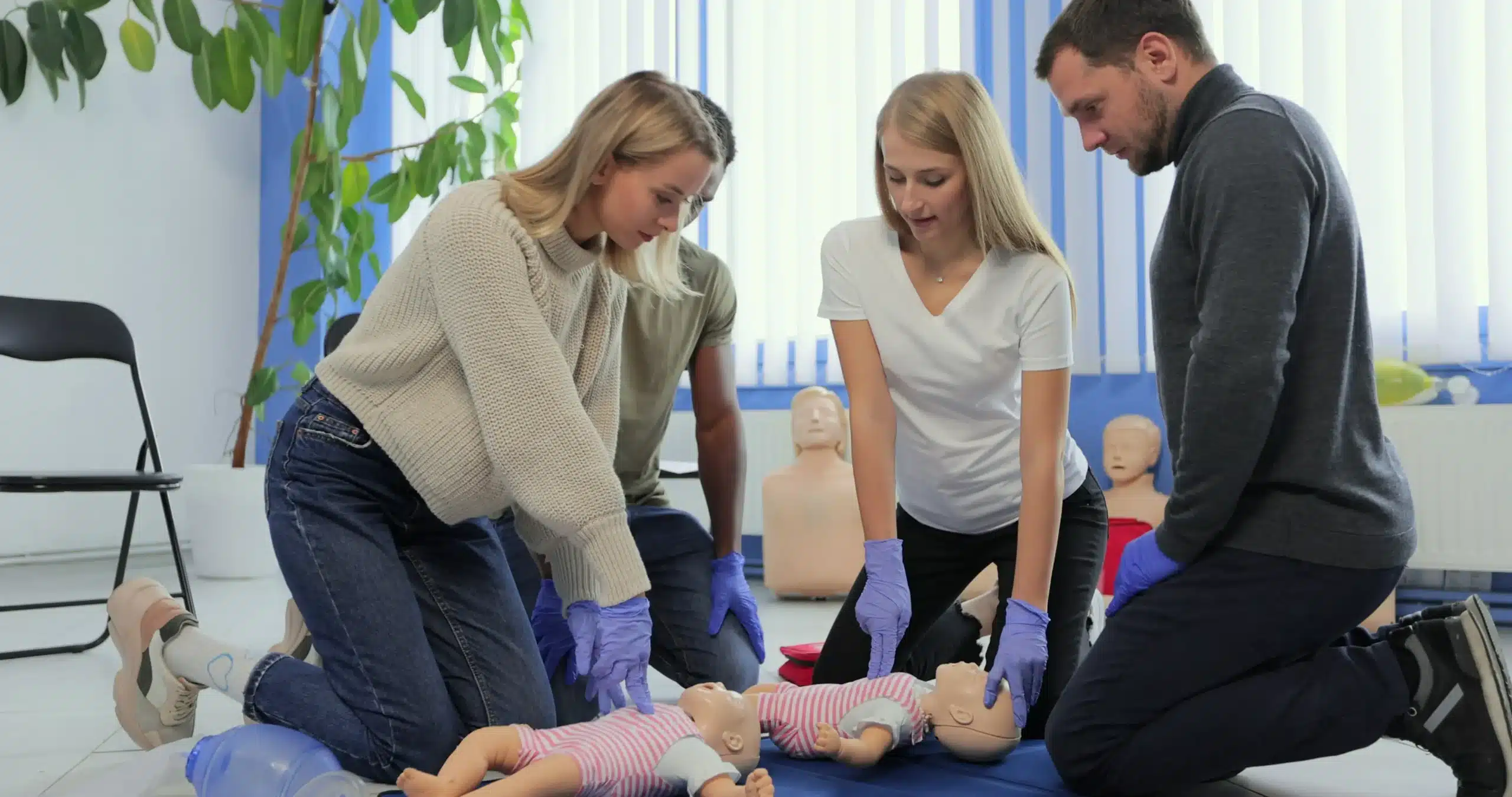Emergencies can happen anytime, anywhere. Being prepared to provide basic life support (BLS) can significantly improve outcomes in critical situations. BLS certification empowers you with the skills to respond effectively to cardiac arrest, respiratory distress, and other life-threatening emergencies. If you’re searching for “BLS certification near me” in Oakland, Alameda, or Berkeley, this guide will provide you with valuable resources and information. We’ll discuss the importance of BLS training, the core skills covered in certification courses, and how to find the right training program for your needs.
Key Takeaways
- BLS certification is essential for healthcare providers and anyone who wants to be prepared for emergencies: It covers core life-saving skills like CPR, AED use, and airway management, giving you the confidence to respond effectively in critical situations.
- Choose a BLS course that fits your learning style and schedule: Options range from traditional in-person classes to flexible online and blended learning formats. Look for accredited providers with experienced instructors and comprehensive course materials.
- Stay current with your BLS skills by renewing your certification every two years: Regular renewal ensures you’re up-to-date on the latest guidelines and best practices in emergency care. Explore convenient recertification options to maintain your credentials.
What is BLS Certification & Why is it Important?
Basic Life Support (BLS) certification gives healthcare professionals and other individuals the skills to respond to life-threatening emergencies. It focuses on providing immediate care during critical situations, such as cardiac arrest or respiratory distress, until more advanced medical personnel arrive. BLS certification emphasizes prompt recognition and effective intervention to improve patient outcomes. This training is crucial for maintaining patient safety and ensuring high-quality care in various healthcare settings. For those in the Oakland, Alameda, and Berkeley areas, CPR Classes Oakland offers a range of American Heart Association certification courses, including BLS.
Core BLS Skills
BLS certification covers essential life-saving techniques, including high-quality CPR, using an automated external defibrillator (AED), and basic airway management. These skills are fundamental for responding effectively to cardiac arrest, respiratory emergencies, and other critical situations. Participants learn to assess the scene, activate the emergency response system, perform chest compressions and rescue breaths, and use an AED to restore a normal heart rhythm. The course also teaches proper airway management techniques to ensure adequate oxygenation. For more information on BLS courses and training, visit the CPR Classes Oakland website.
Who Needs BLS Certification?
BLS certification is often a requirement for many healthcare professionals, including doctors, nurses, paramedics, and other healthcare providers. It demonstrates a commitment to patient safety and high-quality care, making it a valuable asset for career advancement. Many healthcare institutions prefer or require their staff to hold current BLS certification, especially for roles involving direct patient care and emergency response. Beyond healthcare, BLS certification is also beneficial for other professionals, such as lifeguards, teachers, coaches, and childcare providers. Anyone who wants to be prepared to respond to emergencies and provide basic life support can benefit from this training. CPR Classes Oakland offers group discounts for those interested in BLS training and has a low price guarantee, making high-quality training accessible.
Find BLS Certification Courses Near You
Finding the right BLS certification course shouldn’t be a headache. Whether you prefer hands-on learning or the flexibility of online courses, there are several convenient options available.
Safety Training Seminars in Oakland
If you’re in the Oakland area, Safety Training Seminars offers American Heart Association BLS certification courses designed for healthcare professionals. Serving Alameda, Oakland, and Berkeley, their convenient location and commitment to low prices make high-quality training accessible. The courses cover essential lifesaving skills, including CPR, AED use, and airway management, preparing you for various emergencies. They also offer group discounts, which is helpful if you’re coordinating training for a team.
Other Local Training Centers
Beyond specialized training centers, check with local hospitals and clinics. Many offer BLS certification courses for their staff and the community. These courses provide a practical way to gain essential skills and connect with healthcare professionals in your area. Community centers and fire departments are also worth exploring.
Online BLS Certification Options
Online BLS certification courses offer a flexible alternative to traditional classroom learning. These courses typically take a few hours to complete, allowing you to learn at your own pace. Online certification often includes interactive modules, videos, and assessments. Remember that BLS certification involves advanced life support techniques beyond basic CPR, such as using an AED and managing airways. Look for a comprehensive online course that covers all the necessary skills for healthcare providers and emphasizes the importance of hands-on training, a crucial component of BLS certification.
Types of BLS Training
Finding the right BLS training format is key to effectively learning the material and fitting it into your schedule. Let’s break down the most common types: in-person, blended learning, and online courses. Each has its own advantages, so consider what works best for your learning style and availability.
In-Person Training
In-person BLS training offers a hands-on learning experience, ideal for those who thrive in a traditional classroom setting. These courses provide direct interaction with a certified instructor who can offer personalized feedback and answer your questions in real-time. The emphasis on hands-on practice allows you to develop and refine your CPR technique under expert guidance. This format is especially beneficial for healthcare providers, as it allows for simulated real-world scenarios and team training. CPR Classes Oakland offers in-person training for BLS certification.
Blended Learning
Blended learning combines online coursework with in-person skills sessions. This hybrid approach offers flexibility while still providing essential hands-on training. You’ll typically complete the theoretical portion online at your own pace, then attend a shorter in-person session to practice your skills and complete the certification process. This format balances convenience with the benefits of face-to-face instruction. The American Red Cross offers blended learning for BLS certification.
Online Courses
Fully online BLS courses offer maximum flexibility, allowing you to complete training from home. These courses often involve interactive modules, videos, and assessments. While online courses may not offer the same level of hands-on practice as in-person or blended learning, they can be a convenient option for those with limited time or who prefer self-paced learning. Many programs also offer instructor support via email or phone. If you’re considering an online course, make sure it meets the requirements of your workplace or licensing board. Sites like EDUCBA provide more information on online BLS certification.
How Much Does BLS Certification Cost?
Knowing the price range for BLS certification helps you budget and compare training options. Several factors influence the total cost, including your location, the course format (online, blended, or in-person), and any group discounts.
Average Price Range
BLS certification courses typically range from $70 to $100. This price usually covers the training materials, instruction, skills testing, and your certification card. Remember that prices can vary, so it’s always a good idea to check with your chosen provider for their specific pricing. For example, the BLS course at Safety Training Seminars covers essential life-saving skills like CPR, AED use, and choking management. The course also provides healthcare professionals with the knowledge to handle life-threatening emergencies.
Group Discounts and Promotions
Many training centers offer discounts for group bookings, making it a cost-effective option for workplaces or groups of friends. Safety Training Seminars offers discounted rates for group classes, which can be a great way to save money while training your team. Some providers also run occasional promotions or offer discounts for students, military personnel, or first responders. Be sure to ask about potential discounts when you inquire about a course.
Safety Training Seminars’ Low Price Guarantee
Safety Training Seminars is committed to providing high-quality training at affordable prices. We offer a low price guarantee, ensuring you receive excellent value for your investment in life-saving skills. Our goal is to make BLS training accessible to everyone in the community. We believe that everyone should have the opportunity to learn these essential skills.
What to Expect in a BLS Course
So, you’ve decided to get your BLS certification—great! Here’s a rundown of what you can expect, from the classroom to the skills assessment.
Course Duration and Content
BLS certification courses typically take between two and four hours to complete. Many courses offer online learning, allowing you to learn at your own pace. In a BLS course, you’ll cover essential life-saving skills, including cardiopulmonary resuscitation (CPR), how to use an automated external defibrillator (AED), and basic airway management techniques. You’ll also learn about the chain of survival and other critical elements of emergency response.
Assessment Methods
BLS courses typically involve both written and practical exams. The written exam tests your knowledge of the course material, while the practical exam evaluates your ability to perform the skills you’ve learned. You’ll demonstrate proficiency in CPR, AED use, and other BLS techniques. Some programs, like the American Heart Association’s BLS Instructor Program, also certify graduates to teach BLS and Heartsaver courses.
Hands-On Practice
Hands-on practice is a crucial part of any BLS course. You’ll practice your skills on mannequins in a safe and controlled environment. This allows you to build confidence and muscle memory, so you’ll be prepared to act quickly and effectively in a real-life emergency. These courses are designed for various professionals, from healthcare providers and first responders to those working in education and other fields. The American Red Cross also offers instructor training for those interested in teaching BLS.
Get Your BLS Certification
Getting your BLS certification is a straightforward process. This section breaks down the prerequisites, the steps to get your card, and how long your certification is valid.
Certification Prerequisites
There aren’t any strict prerequisites for taking a BLS course. That said, BLS certification demonstrates a commitment to patient safety and high-quality care, making it highly regarded in healthcare. Whether you’re a medical student, healthcare provider, or someone wanting to be prepared for emergencies, BLS training equips you with essential lifesaving skills.
Steps to Get Your BLS Card
Getting your BLS certification typically involves these three steps:
- Find a course: You can find BLS courses offered by hospitals, clinics, and organizations like the American Red Cross and the American Heart Association. Many providers offer the convenience of blended learning, combining online coursework with in-person skills sessions. Safety Training Seminars offers various BLS courses in Oakland and other locations.
- Complete the training: BLS courses cover core skills such as CPR, using an AED, and relieving choking. You’ll learn these skills through lectures, demonstrations, and hands-on practice.
- Pass the exam: After completing the training, you’ll need to pass a written and practical exam to demonstrate your competency. Once you pass, you’ll receive your BLS certification card.
How Long is BLS Certification Valid?
BLS certification, like CPR certification, is typically valid for two years. To maintain your skills and knowledge, you’ll need to recertify every two years. Staying current with your certification ensures you’re always prepared to respond effectively in emergencies. You can find recertification courses through providers like the American Red Cross.
Maintain Your BLS Certification
Keeping your BLS certification current is crucial for any healthcare provider. It ensures your skills and knowledge are sharp, allowing you to respond effectively in emergencies. This section covers everything you need to know about maintaining your BLS credentials.
Renewal Requirements and Frequency
BLS certification is typically valid for two years. To maintain your credentials, renew your BLS certification before it expires. This involves completing a recertification course that covers the latest guidelines and best practices in emergency care. Don’t let your certification lapse—stay ahead of the game and schedule your renewal in advance. Check with your certifying organization or training center for specific renewal requirements.
Recertification Options
Several convenient recertification options are available, making it easy to fit renewal into your busy schedule. Many providers, including Safety Training Seminars, offer renewal courses for those within 30 days of their expiration date. This allows you to quickly update your skills and maintain your certification without significant downtime. Explore different options, such as in-person classes or online renewal courses, to find the format that best suits your needs. More information on renewal courses can often be found on the Red Cross website.
Stay Current with BLS Guidelines
Staying up-to-date with the latest BLS guidelines is essential for providing the best possible care. Guidelines and best practices in emergency care are constantly evolving, so ongoing learning is key. The curriculum for BLS courses is developed and reviewed by medical and scientific experts to reflect the most current recommendations. By renewing your certification, you’ll refresh your knowledge and learn about any updates to procedures or protocols. Safety Training Seminars follows the latest guidelines from the American Heart Association, so you can trust that your training is accurate and comprehensive. Regularly reviewing resources like the American Heart Association website can also help you stay informed about the latest advancements in BLS.
Choose the Right BLS Provider
Picking the right BLS provider comes down to a few key things. You want a program that gives you the skills and confidence to handle emergencies. Here’s what to look for:
Accreditation and Recognition
Choose a provider accredited by a nationally recognized organization. This guarantees the training meets established standards. BLS certification shows you’re committed to patient safety and high-quality care, so accreditation matters. This is especially true for healthcare professionals. A respected certification can boost your professional image, as explained in CareRev’s guide to BLS certification.
Instructor Qualifications
Experienced, certified instructors are key to effective BLS training. They should have deep knowledge and strong teaching skills. The AHA BLS Instructor Certification Program highlights the rigorous training instructors undergo. When choosing a provider, ask about their instructors’ credentials and experience.
Course Materials and Resources
Solid course materials—manuals, videos, and practice equipment—are essential for learning. The quality of these resources directly affects how well you grasp the information, as CPR AED Course points out. Your BLS certification should cover CPR, AED use, and airway management, according to My CPR Certification Online. Ensure the program you choose includes these essentials.
Top BLS Certification Providers
Several reputable organizations offer BLS certification. Here are a few:
American Heart Association (AHA)
The AHA sets the standard for cardiovascular health and offers widely accepted BLS courses. These courses are designed for healthcare providers and anyone who needs to know CPR and basic life support. Safety Training Seminars offers the AHA BLS course, ensuring your training meets the highest standards. Learn more about our AHA-certified BLS course.
American Red Cross
The American Red Cross is another respected BLS certification provider. They offer blended learning—online coursework combined with in-person skills sessions.
National CPR Foundation
The National CPR Foundation provides BLS certification and is a trusted resource for hospitals and clinics. They often incorporate their training into existing programs for staff and the community.
ProTrainings
ProTrainings offers flexible online and in-person BLS training.
Health & Safety Institute (HSI)
HSI is known for comprehensive training programs designed for healthcare professionals.
Common BLS Certification Misconceptions
It’s easy to get confused about BLS certification, especially when you’re first figuring out what you need. Let’s clear up a few common misconceptions.
BLS vs. CPR
One of the biggest points of confusion is the difference between BLS and CPR. They’re related, but not interchangeable. CPR (Cardiopulmonary Resuscitation) teaches chest compressions and rescue breaths for anyone who has stopped breathing. BLS (Basic Life Support) builds on those core CPR skills, adding techniques for more advanced medical emergencies, like using a bag-valve mask or helping someone with an obstructed airway. BLS certification is designed for healthcare providers like doctors, nurses, and EMTs, while CPR certification often suits the general public, including teachers, coaches, and childcare providers. CPR Classes Oakland offers a range of American Heart Association BLS courses to equip healthcare professionals with these essential skills.
The Importance of Hands-On Training
Some people think you can learn everything about BLS from a book or online video. Online resources can be helpful, but they can’t replace hands-on training. Effective BLS requires practical skills and the ability to respond confidently under pressure. That’s why reputable BLS courses, like those at Safety Training Seminars, include hands-on practice with mannequins and other equipment. This helps you develop muscle memory and the confidence to perform BLS effectively during a real emergency.
Certification Validity Across Professions
There’s also sometimes confusion about whether a BLS certification works across different healthcare professions. A BLS certification from a recognized provider like the American Heart Association is generally accepted across the board. Whether you’re a doctor, nurse, or EMT, the same BLS certification applies. Remember that certifications typically expire after two years. Make sure you stay on top of your renewal requirements to maintain your credentials and be ready to provide life-saving care.
Related Articles
- BLS Certification Alameda: The Ultimate Guide – Oakland CPR Classes
- BLS Renewal in Alameda: Your Easy Guide – Oakland CPR Classes
- BLS Training Near Me: Your Comprehensive Guide – Oakland CPR Classes
- Find BLS Classes Near Me: Your Certification Guide – Oakland CPR Classes
- BLS Certification in Oakland: Providers, Costs, and Courses – Oakland CPR Classes
Frequently Asked Questions
What’s the main difference between BLS and CPR certification? CPR focuses on chest compressions and rescue breaths for anyone who has stopped breathing. BLS builds upon CPR, adding advanced techniques like using a bag-valve mask and managing obstructed airways. BLS is geared towards healthcare providers, while CPR training often suits the general public.
How long is my BLS certification good for? BLS certification is typically valid for two years. You’ll need to take a recertification course to keep your skills current and maintain your credentials.
Where can I find BLS courses near me? Hospitals, clinics, and organizations like the American Red Cross and American Heart Association offer BLS courses. You can also find in-person BLS training at Safety Training Seminars in Oakland, which serves the Alameda and Berkeley areas as well. Online courses are another convenient option.
What does a BLS course typically cover? You’ll learn essential life-saving skills such as high-quality CPR, how to use an AED, and basic airway management techniques. Courses also cover the chain of survival and other critical elements of emergency response. Expect a combination of classroom instruction, demonstrations, and hands-on practice.
Why is hands-on training so important for BLS? While online resources are helpful, they can’t replace hands-on training. BLS requires practical skills and the ability to perform under pressure. Hands-on practice with mannequins and other equipment helps you develop muscle memory and the confidence to use your skills effectively in real-life emergencies.


